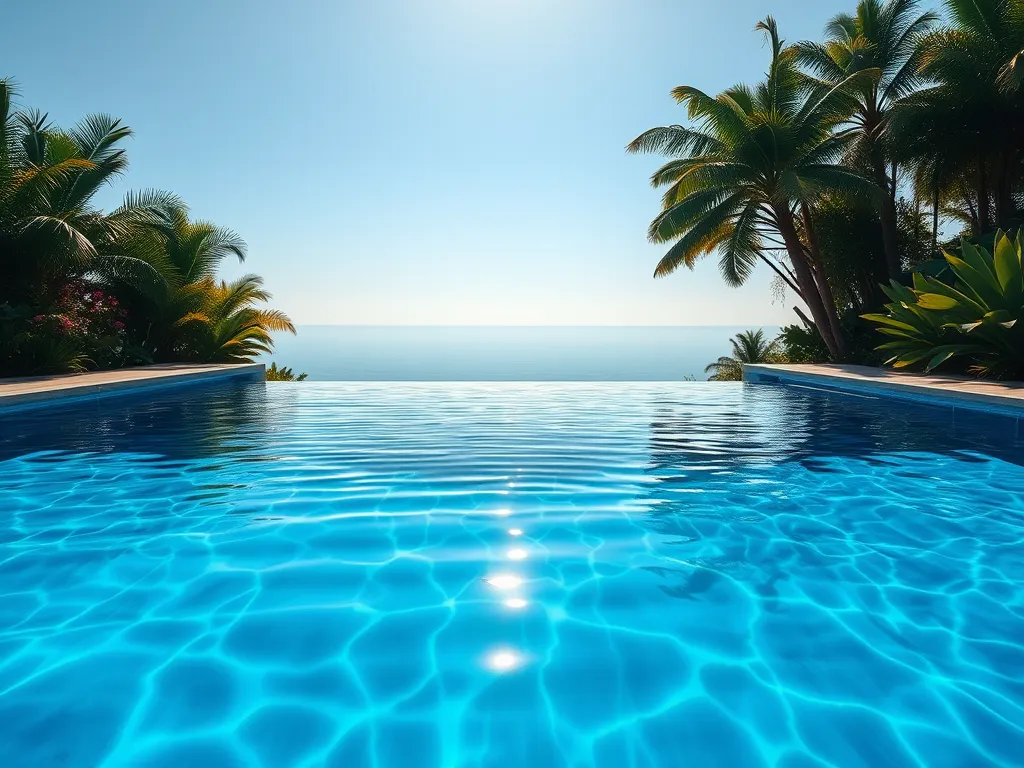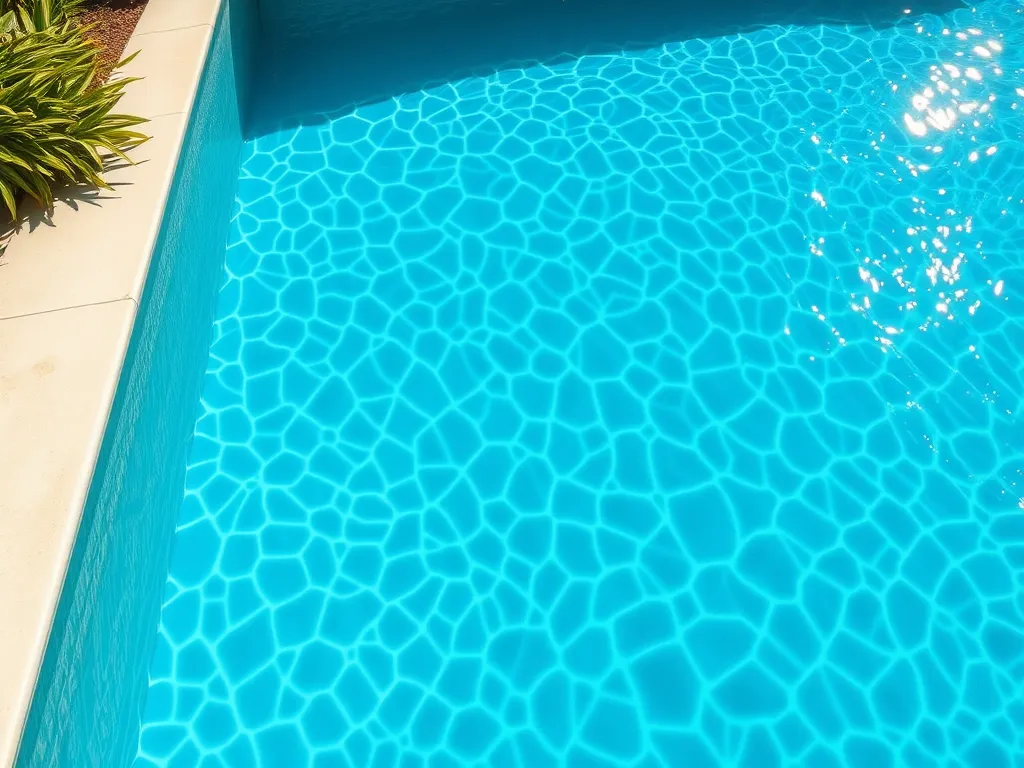Evaporation Loss Calculator
Published on: April 28, 2025 | Last Updated: April 13, 2025
Written By: Rachael Weatherbottom
Evaporation loss occurs when liquids turn into vapor. This is common in industrial processes, swimming pools, and water treatment systems. Our calculator helps estimate water loss quickly. You’ll need basic measurements like surface area and environmental conditions. Understanding evaporation helps conserve water and manage costs.
Evaporation Loss Calculator
How to Use
- Enter water surface area in square meters
- Input current water temperature
- Provide relative humidity percentage
- Add wind speed at water surface level
- Click calculate button
Note: This uses simplified atmospheric conditions. Actual loss may vary with elevation and exact environmental factors.
Factors Influencing Evaporation Loss in Pools
Evaporation rates in swimming pools depend on environmental and design variables. Identifying these factors ensures accurate modeling of water loss. Let’s break down the key contributors. One important aspect to consider is how temperature affects pool water evaporation. Higher temperatures can lead to more rapid pool water evaporation.
Ambient Temperature and Humidity
Higher temperatures accelerate molecular activity at the water’s surface, increasing evaporation. For example, a pool in Phoenix (average summer temp: 104°F) loses 0.25–0.5 inches daily. Humidity inversely affects this: 70% relative humidity can reduce losses by 30% compared to arid conditions. The temperature of a pool can also impact the swimming experience. Keeping the pool at an ideal temperature can enhance comfort and enjoyment for swimmers.
Pool Surface Area and Geometry
Surface area directly impacts evaporation volume. A rectangular 20’x40’ pool (800 sq.ft.) loses 1.5–2.5 gallons per hour in mild climates. Freeform designs complicate calculations due to irregular edges but follow the same principle: more exposed water = higher loss. This evaporation can affect the chemical balance of the pool. A chlorine evaporate pool requires regular testing and maintenance to keep the water clear and safe for swimming.
Wind Exposure and Water Movement
Wind removes saturated air above the pool, replacing it with drier air. A 5 mph breeze can double evaporation rates. Water features like waterfalls or fountains amplify this effect by increasing surface agitation.
Water Temperature Differential
Warmer pool water relative to air temperature raises evaporation. Maintaining a 10°F difference (e.g., 85°F water vs. 75°F air) increases loss by 15–20% compared to equal temperatures.
| Factor | Impact Range | Data Source |
|---|---|---|
| Temperature | +0.2% per °F above air temp | ASHRAE 2015 |
| Wind Speed | 1–5 mph = 50–200% increase | NOAA Evap. Studies |
| Humidity | 10–70% RH = 2.5x loss variance | Pool & Spa Alliance |
The Evaporation Loss Formula: Breaking Down the Math
The industry-standard equation for evaporation loss (E) is:
E = (A × (ew - ea) × (0.089 + 0.0782 × v)) / 2413
- A: Surface area (ft²)
- ew: Vapor pressure of water at pool temp (mmHg)
- ea: Vapor pressure of ambient air (mmHg)
- v: Wind velocity at surface (mph)
Variable Sources and Conversions
Vapor pressure values derive from the Antoine equation or lookup tables. Density of water (997 kg/m³ at 25°C) converts volumetric loss to gallons. For a 500 ft² pool with 80°F water and 50% RH: Calculating the gallons in a pool is important for maintenance. It's essential to know the total volume for proper chemical balancing and circulation.
- Calculate ew = 26.8 mmHg (from steam tables)
- Find ea = 13.4 mmHg (50% of ew)
- Assume v = 3 mph
- Plug into formula: E ≈ 4.8 gallons/hour
Also See: Pool Cover Size Calculator for the Perfect Fit

Common Scenarios Requiring Evaporation Loss Calculations
Outdoor Pools in Arid Climates
Las Vegas pools lose 20,000–30,000 gallons annually. High temps (110°F), low humidity (15%), and frequent winds (8–12 mph) create extreme evaporation. Mitigation includes solar covers and windbreaks. With the arrival of April, the weather becomes perfect for enjoying the pools. Many locals and visitors look forward to the warm sunshine and fun by the water during this time.
Heated Pools and Spas
Heating a spa to 104°F in 60°F air triples evaporation. A 400 sq.ft. heated pool loses 5–7 gallons daily in winter versus 2–3 gallons unheated.
Commercial Aquatic Facilities
Olympic-sized pools (13,500 sq.ft.) lose 150–300 gallons daily. Indoor facilities use HVAC dehumidification to recover 60–80% of evaporated water.
Evaporation Loss Applications Beyond Residential Pools
Industrial Cooling Towers
ME 393 evaporation loss equations model drift and emissions in power plants. A 500 MW facility loses 15–20 million gallons/month via evaporative cooling.
Water Treatment Reservoirs
Open-air tanks in California lose 3–5% annually to evaporation. The State Water Project uses floating covers on 12 reservoirs, saving 11 billion gallons yearly.
Space Engineering Applications
NASA’s passive thermal management systems for lunar habitats use evaporation loss formulas to prevent coolant boil-off in vacuum conditions.
Seasonal Variations in Evaporation Rates
Monthly losses fluctuate with climate patterns. Phoenix pools peak at 1.25”/week in July, while Miami pools average 0.75”/week year-round due to humidity.
| City | Jan | Apr | Jul | Oct |
|---|---|---|---|---|
| Phoenix | 0.4" | 0.8" | 1.25" | 0.6" |
| Chicago | 0.1" | 0.3" | 0.65" | 0.25" |
| Miami | 0.6" | 0.7" | 0.75" | 0.65" |
FAQs: Evaporation Loss in Pool Care
Why Does Evaporation Account for 70% Of Pool Water Loss?
Unlike splash-out or backwashing, evaporation occurs continuously. A 16’x32’ pool can lose 10,000 gallons annually in moderate climates.
How Often Should I Calculate Evaporation Loss?
Seasonal recalculations are ideal. Monitor water level weekly—a 1/4” drop equals ~80 gallons in a 400 sq.ft. pool.
Do Pool Covers Eliminate Evaporation?
Solar covers reduce loss by 95%. Automatic safety covers achieve 98–99% reduction, saving 500–1,000 gallons monthly.
Are Evaporation Formulas Accurate for Saltwater Pools?
Salt content lowers vapor pressure by 1.5–2%, marginally reducing loss. The standard formula remains applicable with a ±3% margin.

Advanced Calculation Methods
Computational Fluid Dynamics (CFD) Modeling
Resorts use ANSYS Fluent simulations to predict microclimate effects. A study at The Mirage (Las Vegas) matched CFD predictions to real-world data within 4%.
Sensor-based Monitoring Systems
IoT float valves with humidity/temp sensors provide real-time loss rates. Hayward’s OmniLogic reports evaporation alongside other metrics at 0.01” precision.
ASTM Standards for Evaporation Testing
ASTM E96 outlines gravimetric testing. A 24-hour pan test under controlled conditions determines site-specific coefficients.
Best Practices for Minimizing Evaporation
- Cover when idle: 8 hours/day coverage cuts losses by 65%
- Lower nighttime temps: Reduce water temp 5°F after use
- Plant windbreaks: Hedges 10’ tall reduce wind speed by 50% at pool level
- Use liquid blankets: Alcohol-based films last 24–72 hours, reducing loss 30–40%
Case Study: Evaporation Management in Commercial Pools
The San Diego Community Center reduced annual water use by 1.2 million gallons through:
- Installing automated covers (8pm–6am closure)
- Lowering pool temp from 84°F to 80°F off-season
- Adding perimeter glass walls as windbreaks
Evaporation dropped from 18,000 to 6,500 gallons/month, achieving 18-month ROI.
When to Consult a Professional
Consider expert evaluation for:
- Pools losing >1” daily despite covers
- Indoor pool humidity exceeding 60% RH
- Historical homes with overflow risks
For precise evaporation loss modeling tailored to your pool, visit My Pool Calculator. Our algorithms account for local weather data, pool geometry, and usage patterns.
Additional Resources for You:
- Pool & Hot Tub Alliance (PHTA) – Industry Standards & Training
- Heat / Water Loss Calculator – Barcliff Energy Services Ltd
- Evaporation Loss Calculator - Calculator Academy
- #1 Best Pool Evaporation Calculator for Water Loss Control
- No Access Pool Evaporation Calculator
A pool care geek who’s been testing water chemistry since she was tall enough to reach the skimmer.
Chemical Dosage, Pool Calculators


